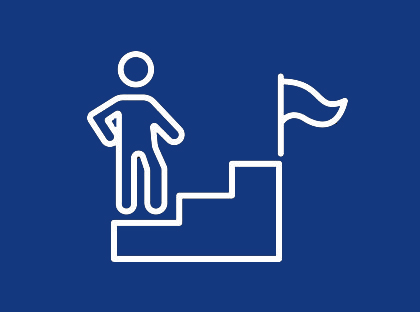Holistic 360° approach
Support from strategy to implementation.
From 2026, the digital product passport (DPP) will gradually become mandatory. Are you prepared? If not, then you should act now. Otherwise, you risk damaging your reputation and no longer being able to sell your products in the EU.
However, don't view the digital product passport (DPP) as a chore.
Instead, see it as an opportunity, because it offers numerous advantages:
Start implementing a DPP system now with R. STAHL in cooperation with conplement as your ideal partners. We offer you various options depending on your individual needs: webinars, consulting, workshops and implementation support.



At R. STAHL, we already have extensive practical experience with digital twin platforms and preparations for the DPP. This is complemented by conplement's cloud-based ‘twinsphere Suite’ platform – a highly scalable SaaS solution for the creation and integration of digital twins. We use this expertise as your consulting partner. You also benefit from our comprehensive knowledge of the latest regulations.
We will tell you everything you need to know about implementing the DPP based on the administration shell. And we will protect you from typical pitfalls.
Support from strategy to implementation.
Active participation in relevant committees and associations.
Access to experts and partners with synergies from various industries.
Rating plates are used as a central source of information for identifying and documenting products and machines in the process industry. They make clear identification possible through details such as the manufacturer's name, model and serial number, provide technical specifications for safe operation, document compliance with industrial standards, and help with machine maintenance and inspections.
Traditional rating plates are static, are only visible when you are near them, and the amount of information they contain or space they can take up is limited. However, the number of details they need to provide is constantly increasing. In contrast to this, digital nameplates allow global access to the relevant product or machine data and make it easier to document changes over the life cycle of the components and systems, making them perfect for the industrial Internet of Things (IIoT).
A digital nameplate according to IEC 61406 is a QR, 2D data matrix codes or RFID tag which clearly identifies an asset (component or system). This identification takes the form of a link which calls up the corresponding digital twin at R. STAHL. The digital identifier is used to provide up-to-date information in multiple languages all over the world. This makes systems more efficient and reliable, simplifies maintenance planning, makes it easier to comply with safety and environmental regulations, and allows extensive access to all relevant documents.
In conjunction with asset administration shells (AAS according to IEC 63278-1), digital nameplates greatly improve access to and management of product data, an issue which is frequently encountered in industry. These technologies make it possible to access relevant information and documentation relating to a system, machine or component at any time and anywhere in the world. The asset administration shell is a central data model which promotes interoperability between different systems and makes it simple to integrate data for example into ERP or asset management systems.
A smartphone or tablet with integrated camera and Internet connection are required to be able to access the information contained in a digital nameplate. These devices make it possible to scan QR, 2D data matrix codes or RFID tags which are integrated in the digital nameplates. The information that is provided when these codes are scanned often contains links to detailed product data and documentation on the manufacturer's platform and the product's serial number.
Asset administration shells are standardised, structured XML data models. They can be used as the basis for digital engineering and accompany a product throughout its entire life cycle as a digital product passport. They assist with efficient data transfer along the entire value chain, improve document management and, in the case of smart products, allow communication between machines according to the principles of the industrial Internet of Things (IIOT).
The term "digital twin" has multiple meanings. It is often understood as a simulation model which is created and provided in specific formats. There are considerable differences between these and digital twins based on an asset administration shell. The Industrial Digital Twin Association (IDTA) is instrumental in the continuous development of asset administration shells. The aim of the IDTA is to establish asset administration shells and develop submodels. Asset administration shells set themselves apart as data models thanks to their interoperability. By using classifications, e.g. ECLASS, all information can be easily imported into software environments, such as an ERP or asset management system.
According to the specifications from the ESPR, the DPP entails the provision of a digital product passport, which contains a great deal of information about the environmental impact (including the carbon footprint) and the sustainability of the products in order to increase transparency, improve energy efficiency, promote a circular economy, facilitate repairs and make recycling possible.
The European Commission is calling for the digital product passport (DPP) as part of efforts to strengthen the circular economy and support sustainable production and consumption models. The DPP is intended to provide a wealth of information about the service life of products, including their composition, origin and recyclability, as well as details of the materials used, production processes, energy consumption and environmental footprint. Other key requirements include:
The new ESPR is intended to replace the existing Ecodesign Directive and applies to all physical products. Its aim is to promote ecological sustainability through improved design and production. The DPP plays a key role by providing detailed product information which helps ensure that the product is used sustainably and recycled. This information allows users to make sound decisions which contribute towards sustainability and therefore implement the principles of the ESPR in practice.